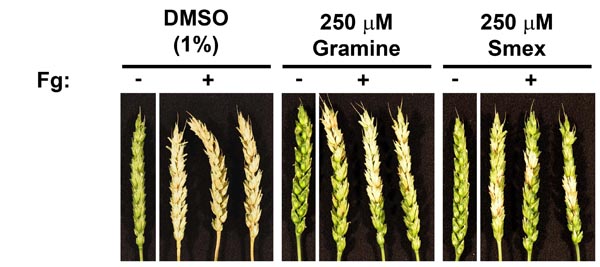Found in translation: high-throughput chemical screening in Arabidopsis thaliana identifies small molecules that reduce Fusarium head blight disease in wheat
Schreiber KJ, Nasmith CG, Allard G, Singh J, Subramaniam R, Desveaux D
Mol. Plant Microbe Interact. 2011 Jun;24(6):640-8
PubMed PMID: 21303209
Abstract
Despite the tremendous economic impact of cereal crop pathogens such as the fungus Fusarium graminearum, the development of strategies for enhanced crop protection is hampered by complex host genetics and difficulties in performing high-throughput analyses. To bypass these challenges, we have developed an assay in which the interaction between F. graminearum and the model plant Arabidopsis thaliana is monitored in liquid media in 96-well plates. In this assay, fungal infection is associated with the development of dark lesion-like spots on the cotyledons of Arabidopsis seedlings by 4 days postinoculation. These symptoms can be alleviated by the application of known defense-activating small molecules and in previously described resistant host genetic backgrounds. Based on this infection phenotype, we conducted a small-scale chemical screen to identify small molecules that protect Arabidopsis seedlings from infection by F. graminearum. We identified sulfamethoxazole and the indole alkaloid gramine as compounds with strong protective activity in the liquid assay. Remarkably, these two chemicals also significantly reduced the severity of F. graminearum infection in wheat. As such, the Arabidopsis-based liquid assay represents a biologically relevant surrogate system for high-throughput studies of agriculturally important plant-pathogen interactions.

